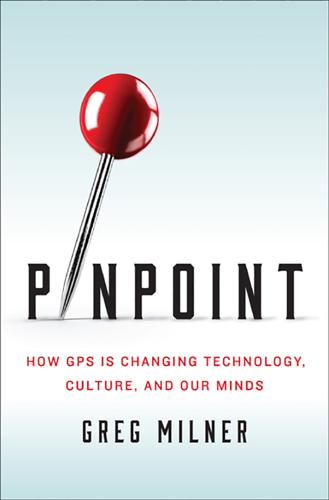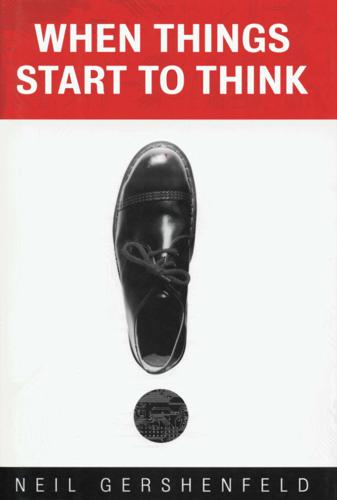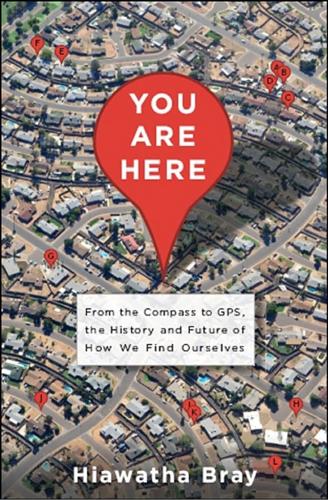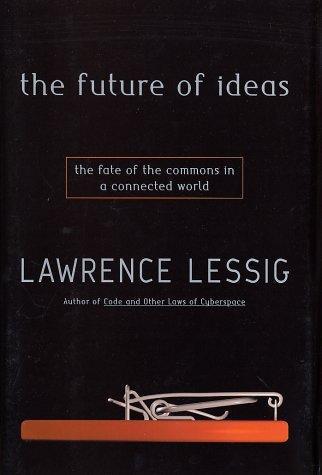
Wonderland: How Play Made the Modern World
by
Steven Johnson
Published 15 Nov 2016
But the attempt to solve that problem—in the name of art and sonic experimentation—would lead, almost two decades later, to a breakthrough military technology, one that would eventually become a crucial component of civilian wireless communications. As it happens, to make that leap, Antheil needed the most unlikely partner imaginable: Hedy Lamarr, at the time one of the most glamorous movie stars in the world. Hedy Lamarr Ignored for many decades, the story of Lamarr and Antheil’s strange-bedfellows collaboration has in recent years become part of tech-history lore. Lamarr had begun her career as an actress in Weimar Germany, and married an arms dealer who ultimately turned out to have ties to the Nazis.
…
Adler, The Writing Machine (London: Allen and Unwin, 1973), 5. The very first long-distance: For more on the talking drums, see James Gleick, The Information: A History, a Theory, a Flood (New York: Vintage, 2012). “The Ballet began”: Richard Rhodes, Hedy’s Folly: The Life and Breakthrough Inventions of Hedy Lamarr, the Most Beautiful Woman in the World (New York: Doubleday, 2011), 68. “outsacked the Sacre”: Paul Lehrman, “Blast from the Past,” Wired, November 1, 1999, http://www.wired.com/1999/11/ballet. “From this moment on”: Ibid. Antheil later wondered: Quoted in Anna Corey, “How ‘The Bad Boy of Music’ and ‘The Most Beautiful Girl in the World’ Catalyzed a Wireless Revolution—in 1941.” http://people.seas.harvard.edu/~jones/cscie129/nu_lectures/lecture7/hedy/lemarr.htm.
…
“Expectancy Model of Fear, Anxiety, and Panic.” Clinical Psychology Review 11:2 (1991): 141–53. Rescorla, Robert A., and Allan R. Wagner. Classical Conditioning: Current Research and Theory. New York: Appleton-Century-Crofts: 1972. Rhodes, Richard. Hedy’s Folly: The Life and Breakthrough Inventions of Hedy Lamarr, the Most Beautiful Woman in the World. New York: Doubleday, 2011. Riskin, Jessica. “The Defecating Duck, Or, the Ambiguous Origins of Artificial Life.” Critical Inquiry 29:4 (2003): 599–633. ———. “Eighteenth-Century Wetware.” Representations 83:1 (2003): 97–125. Rosheim, Mark E. Robot Evolution: The Development of Anthrobotics.

Smart Mobs: The Next Social Revolution
by
Howard Rheingold
Published 24 Dec 2011
Anna Couey, “The Birth of Spread Spectrum: How ‘The Bad Boy of Music’ and ‘The Most Beautiful Girl in the World’ Catalyzed a Wireless Revolution—In 1941,” MicroTimes 166, 23 June 1997, <http://www.sirius.be/lamarr.htm > (23 February 2002). See also: Ashley Craddock, “Privacy Implications of Hedy Lamarr’s Idea,” Wired News, 11 March 1997, <http://www.wired.com/news/politics/0,1283,2507,00.html > (14 October 2001). 54. Chris Beaumont, “Hedy Lamarr, George Antheil, and the Secret Communications System Patent,” <http://www.ncafe.com/chris/pat2/index.html > (23 February 2002). 55. Peter H. Dana, “Global Positioning System Overview,” 1 May 2000, < http://www.colorado.edu/geography/gcraft/notes/gps/gps_f.html > (23 February 2002). 56.
…
When Hughes told me that the idea of “frequency-hopping, spread-spectrum” radio first occurred to actress Hedy Lamarr while she played four-handed piano, I knew I was in for a tale. Sure enough, Lamarr was born Hedwig Maria Eva Kiesler, an Austrian aristocrat, famous as a teenager for being “the most beautiful girl in the world.”53 She was married to an Austrian arms merchant who did business with the German government prior to World War II. Her husband was so possessive that he forced her to attend his technical meetings with the German military. Unhappy with her marriage and the Nazi regime, Hedwig drugged her maid, escaped to England and then to Hollywood, where she became Hedy Lamarr. One night, while playing four-handed piano with avant garde composer George Antheil, she thought of a way to solve the problem of radio-guided torpedoes.
…
One night, while playing four-handed piano with avant garde composer George Antheil, she thought of a way to solve the problem of radio-guided torpedoes. Lamarr recalled from her ex-husband’s meetings that the Germans were unable to guide torpedoes with radio signals because the target ship could jam the signals by broadcasting on the same frequency. Lamarr suddenly wondered if there was a way to send a chunk of your signal on one frequency and then hop to a completely different frequency for the next part of the signal. With both the transmitter and the receiver synchronized regarding which frequencies to hop to next—a little like playing four-handed piano—the signal would resist jamming.

Smart Cities: Big Data, Civic Hackers, and the Quest for a New Utopia
by
Anthony M. Townsend
Published 29 Sep 2013
But by the mid-1990s, a new generation of cheap and powerful digital signal processing chips was under development. They would power advanced radios that could turn junk spectrum into a broadband bonanza. Wi-Fi used this new computational power and a frequency-hopping technique called “spread-spectrum,” originally devised for torpedo guidance during World War II by actress and inventor Hedy Lamarr and composer George Antheil, to simply weave its signals around any interference.22 The result was that computers could now shove almost as much data across the public airwaves as they could over a wire, with no subscription fees. Wireless local area network (WLAN) systems had existed in offices and warehouses for years, but every manufacturer used a different standard.
…
., Evaluating New Telecommunications Services (New York: Plenum Publishing, 1978). 8Burns, “Cultural Identity and Integration in the New Media World,” 6–7. 9Red Burns, interview by author, New York, October 24, 2011. 10Martin Elton, martin.elton@nyu.edu, “Through the Looking Glass: The Rhizome article on ITP,” private e-mail reposted by Gilad Rosner, itp-alumni@lists.nyu.edu, December 21, 2011. 11Red Burns, “Technology is not enough,” paper presented at the American Council on Education, Washington, DC, October 16, 1981. 12Burns, interview, October 24, 2011. 13William Gibson, “Rocket Radio,” Rolling Stone, June 15, 1989. 14Burns, “Cultural Identity and Integration in the New Media World,” 7. 15Dennis Crowley, interview by author, May 13, 2011. 16Dodgeball.com, November 9, 2000, http://web.archive.org/web/200011092025/http://www.dodgeball.com/city/. 17Crowley, interview, May 13, 2011. 18Crowley, interview, May 13, 2011. 19Crowley, interview, May 13, 2011. 20Five years later, when a half-decade’s worth of archived check-ins were migrated to the Foursquare database, Crowley e-mailed with the discovery that on November 17, 2003, during a test, I had tapped out a terse message, hit send, and became the first person (other the Crowley and Rainert) to check in on the third version of Dodgeball. 21Crowley, interview, May 13, 2011. 22Laura Barnett, “If It Wasn’t For Hedy Lamarr, We Wouldn’t Have Wi-Fi,” The Guardian, last modified December 4, 2011, http://www.guardian.co.uk/theguardian/shortcuts/2011/dec/04/hedy-lamarr-wifi. 23“A Brief History of Wi-Fi,” The Economist, June 10, 2004, http://www.economist.com/node/2724397. 24Alvin F. Harlow, Old Wires and New Waves: The History of the Telegraph, Telephone and Wireless (New York: D. Appleton-Century, 1936), 456; “About IIT: Hall of Fame: Lee DeForest,” last modified October 2, 2012, http://www.iit.edu/about/history/hall_of_fame/lee_de_forest.shtml; SCANFAX Year in Review, “Lee de Forest: Father of Radio Broadcasting and Receiving,” IEEE-Chicago Section: Chicago, Illinois, 2008, 13, http://www.ieeechicago.org/LinkClick.aspx?

Pinpoint: How GPS Is Changing Our World
by
Greg Milner
Published 4 May 2016
One of the most controversial aspects of the system was the decision on how to structure the ranging signal sent by the satellites to GPS receivers. Spread-spectrum technology, of which the GPS signal is one form, has an unlikely provenance. In the early 1940s, the actress Hedy Lamarr, at the pinnacle of her Hollywood fame, collaborated with the composer George Antheil on a wartime idea they believed would prevent jamming of the signals sent to radio-controlled torpedoes. They proposed spreading the signal over several different frequencies—effectively increasing the signal’s bandwidth—so that an enemy would have the difficult task of jamming them all to prevent the signal’s informational content from getting through.
…
Ballard, Development and Employment of Fixed-Wing Gunships, 1962–1972 (Washington, DC: Office of Air Force History, United States Air Force, 1982), 84–5. 52 “the automated battlefield”: Quoted in Frank Barnaby, Ronald Huisken, and Stockholm International Peace Research Institute, Arms Uncontrolled (Cambridge, MA: Harvard University Press, 1975), 72. 52 Igloo White: Phil Stanford, “The Automated Battlefield,” New York Times, February 23, 1975. 52 “keen appreciation”: Brad Parkinson, author interview. 54 “I recognized that there was pressure”: Brad Parkinson, oral history interview by Michael Geselowitz. 54 On Labor Day 1973: On the “lonely halls” meeting, see Bradford W. Parkinson and Stephen T. Powers, “Fighting to Survive: Five Challenges, One Key Technology, the Political Battlefield—and a GPS Mafia,” GPS World, June 2010. 54 the actress Hedy Lamarr: Len Jacobson, Flying For GPS (Xlibris, 2014), 34. 55 This is what every GPS receiver: For a concise explanation of GPS and spread-spectrum signals, see Jacobson, Flying For GPS, 46–8. 55 10-watt bulb in Rome: Jules McNeff, “The Global Positioning System: A Quiet Revolution in Time and Space,” IEEE Transactions on Microwave Theory and Techniques 50, no. 3 (March 2002). 55 amplify the signal: “Using Psuedo [sic] Random Code as an Amplifier,” http://www.trimble.com/gps_tutorial/sub_amplify.aspx. 56 “otherwise brilliant career”: Brad Parkinson, “GPS For Humanity,” Stanford Engineering Hero Lecture, 2012, http://www.youtube.com/watch?

When Things Start to Think
by
Neil A. Gershenfeld
Published 15 Feb 1999
There is a beautiful theory for how to generate bits for use in spread spectrum that appear to be completely random but in fact are entirely predictable. A transmitter uses such a sequence to spread its signal and the receiver then uses an identical copy to recover the message (this idea can be traced back to the ac- 166 + WHEN THINGS START TO THINK tress Hedy Lamarr and composer George Antheil using piano rolls in World War II). This is what you hear when your modem hisses. The catch is that if the receiver is remote from the transmitter it has a difficult computing job to do to figure out the spreading sequence that the transmitter used. This is part of what a GPS receiver must do to lock onto a satellite and find its position.

Everything Under the Sun: Toward a Brighter Future on a Small Blue Planet
by
Ian Hanington
Published 13 May 2012
Sometimes it does take a rocket scientist... to take on Hollywood HEDY LAMARR WAS once regarded as the most beautiful woman in Hollywood. In 1933, she scandalously appeared nude in a Czech film called Ecstasy, which brought her to the attention of U.S. movie moguls. Through the 1930s, ’40s, and ’50s, she starred in some of Hollywood’s biggest hits alongside leading male celluloid idols like Spencer Tracy and Clark Gable. She was also a part-time rocket scientist. In fact, we have her to thank for some of the technology used in cellphones and the Internet. In 1940, Lamarr and avant-garde music composer George Antheil devised and patented a communications system based on “frequency hopping” for use in radio-guided torpedoes.

You Are Here: From the Compass to GPS, the History and Future of How We Find Ourselves
by
Hiawatha Bray
Published 31 Mar 2014
Transmitter and receiver would regularly “hop” from one frequency to another with the aid of a synchronizing system to ensure that both were on the same wavelength at the same time. The legendary Nikola Tesla won a patent on the idea in 1903. Years later actress Hedy Lamarr secured a patent of her own. Under contract to Metro-Goldwyn-Mayer, Lamarr still found time to dabble in technical matters that had fascinated her since her abortive marriage to an Austrian arms merchant. She and a friend, film music composer George Antheil, designed a frequency-hopping system for radio-guided torpedoes to ensure they could not be defeated by enemy jamming signals.3 By the 1950s frequency-hopping or “spread-spectrum” radios were being deployed by the US armed forces.

The Future of Ideas: The Fate of the Commons in a Connected World
by
Lawrence Lessig
Published 14 Jul 2001
And through technologies that facilitate coordination—again, analogous to the technologies of Ethernet—this system would permit many receivers, and hence many broadcasters, to coordinate use of the same radio spectrum.23 The idea for this way of allocating spectrum reaches back to World War II, and to the work of actress Hedy Lamarr.24 Lamarr and her partner, George Antheil, were exploring ways for submarines to communicate without detection. They invented a system where a transmitter would hop along the radio spectrum—transmitting for a moment at one frequency, and then jumping at the next moment to another—while the receiver, knowing the pattern the transmitter would take, would tune to the different frequencies at precisely the right moment in time.